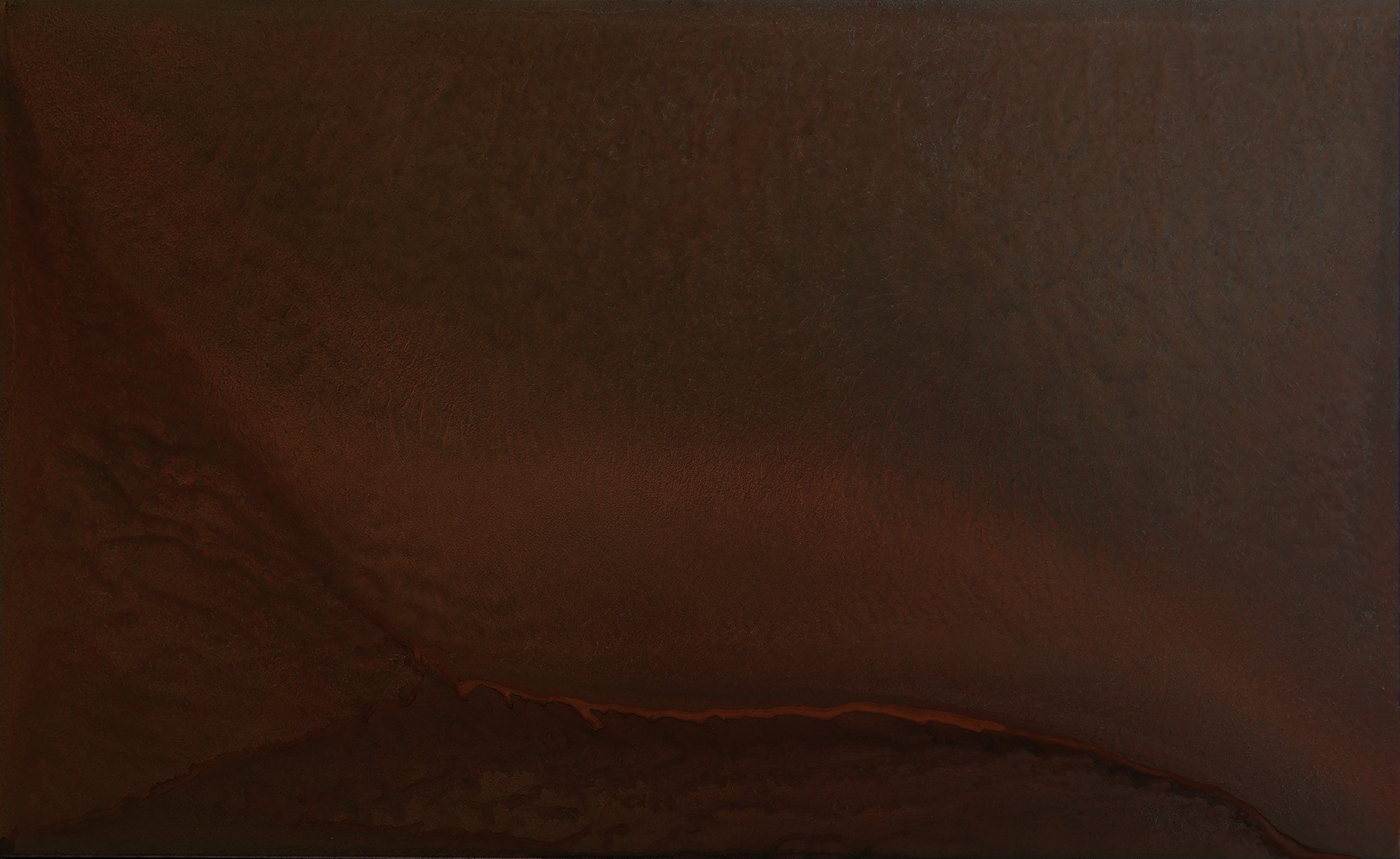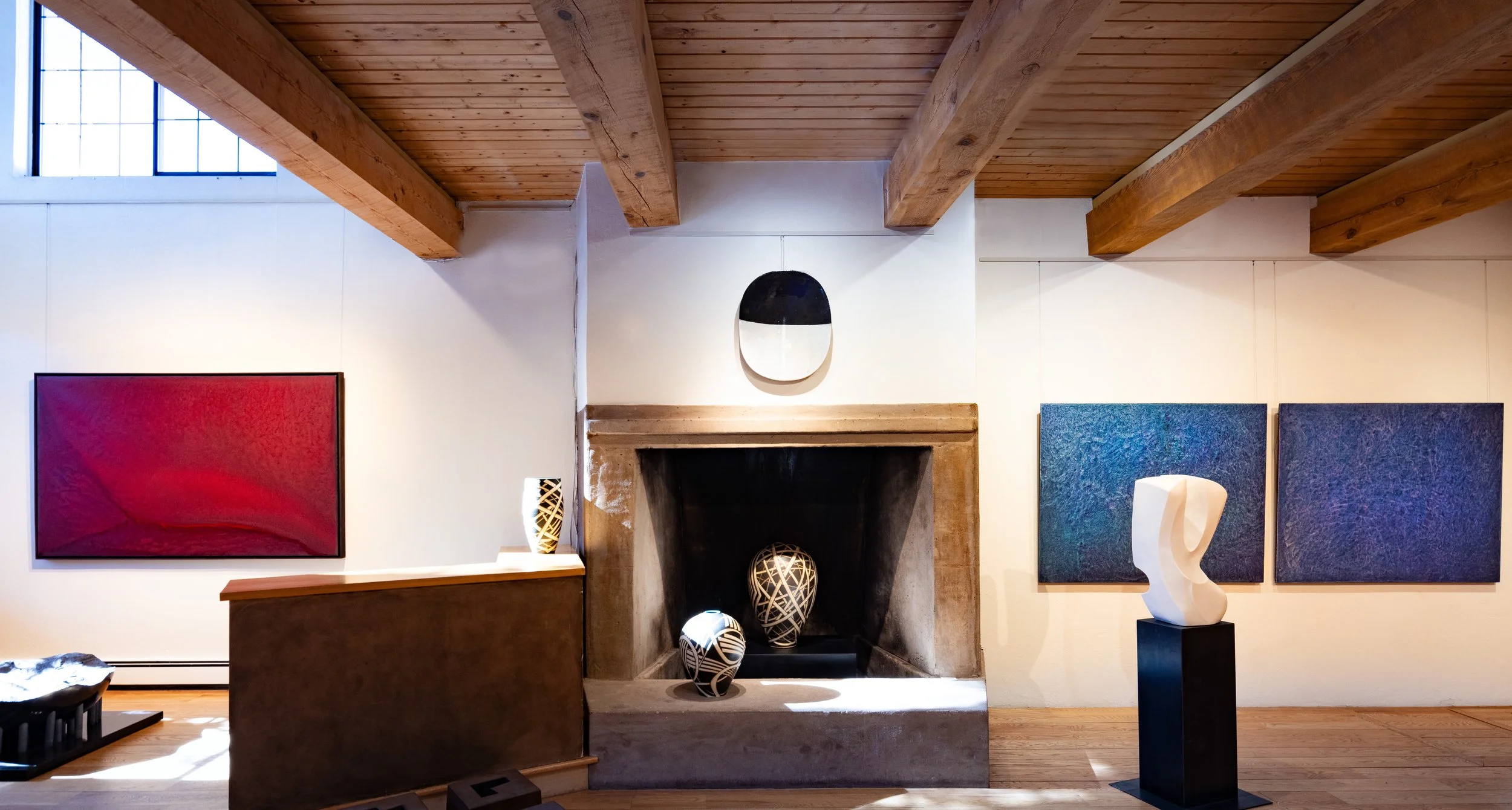
GAZE
LUMINOUS GAZE
An exhibition of new paintings at G2 Gallery Santa Fe, November 22, 2024 - March 29, 2025.
The Gaze series investigates the permeable boundary between being and seeing—those rarified moments when our relationship with space transforms through the act of perception. Each work manifests the subtle threshold where conscious observation intersects with unconscious experience.
Analogous to the liminal state between wakefulness and dreams, these works guide viewers into intimate territories of awareness. They operate as phenomenological portals—not unlike a rain-streaked window or the ephemeral blur of passing scenery—where temporal experience transmutes into luminescence.
The act of gazing creates a contemplative sanctuary for the peripatetic mind—spaces where viewers can transcend the imperative of interpretation. These works examine those interstitial moments when we find ourselves suspended in life's pauses: waiting for a traffic light to change, observing dust motes as they traverse a shaft of sunlight or discerning patterns within passing clouds.
The paintings navigate between profound presence and gentle dissociation, oscillating between corporeal anchoring and suspended temporal awareness. They function as mirrors to that mercurial realm where consciousness, subconsciousness, and unconsciousness converge—where the mind's eye opens to infinite possibility and the boundaries between observer and observee begin to dissolve. Stephen Auger, 2024
This Other Radiance
In order to understand Stephen Auger’s remarkable and unusual paintings, one needs to dip into his history as an artist. Doing so, one is brought to this fact: Auger has a degree in the Neurophysiology of Color Perception. And while that fact doesn’t say it all, it says a lot about the rich perceptual phenomena one encounters in his work. Are these paintings in the traditional sense, or visual spells cast by a magician in order to capture the viewer in a web of chromatic harmonies, intricate textures, and a host of luminous aftereffects?
Auger’s paintings are shimmering veils of paint combined with impossibly tiny crystal spheres that range from 40 to 100 microns in diameter. The result is that each painting must be read not only in terms of its color and radiant light, by also by its surface topography. Working with the crystals embedded in oil-based pigments, Auger manipulates his canvases in such a way that the paint’s viscous properties allow for flowing, pooling, and a complex layering of materials that mimic sedimentation. And so his work is as much about topography and the forces of erosion as it is about the fugitive quality of light. No two angles of viewing a painting by Auger will produce the same chromatic effects or the same reflectivity.
Looking at this work, one is first struck by its otherworldly beauty, and, in truth, his paintings could rest at that level. After all, how much does one need to know about the neurophysiology of perception to grasp that Auger is an artist who traffics in visual encounters of the rare kind? His work provides a radiance that emanates not just from the physical properties of matter—reflection and refraction—but from an internal, metaphysical radiance achieved through a rigorous practice and a commitment to experimentation and hard work.
Of course there is much in the way of pure visual pleasure that comes with studying Auger’s work, but the artist also holds up a mirror to Nature. One can get lost in the paintings’ associations with natural phenomena: water falling on a wall of slate, the residues of fire and ice, the skin of a serpent, the erosion of the earth’s crust by water, wind, and countless upheavals. These are psychic forces as well, all of which contribute to the push and pull of a mature artist who is not only a conduit for Nature but one who also mirrors the nature of perception.
Diane Armitage
www.g2santafe.com

Gaze 1
Optical Polymers, refractive Pigments on Aluminum Panel
48 x 60 x 2 in

Gaze 2, 2024,
Optical Polymers, refractive Pigments on Aluminum Panel 48 x 60 x 2 in

Gaze 3, 2024
Optical Polymers, refractive Pigments, physical Pigments on Archival Canvas

Gaze 4, 2024
Optical Polymers, refractive Pigments, physical Pigments on Archival Canvas , 50 x 82 x 2 in

Gaze 6
Refractive Pigments, Physical Pigments, Optical Polymers, Glass Spheres, on Archival Canvas, 63 x 75.50 x 2 in

Gaze 7
Refractive Pigments, Physical Pigments, Optical Polymers, Glass Spheres, on Archival Canvas, 63 x 75.50 x 2 in

Gaze 5
Refractive Pigments, Physical Pigments, Optical Polymers, and Glass Spheres, on Archival Canvas, 63 x 75.50 x 2 in

G2 Gallery, Installation view







